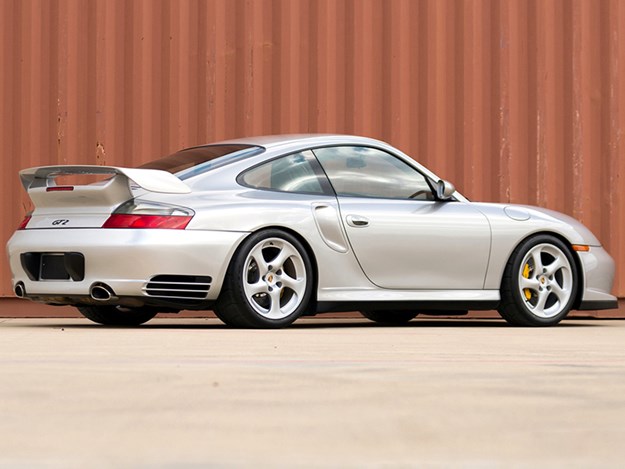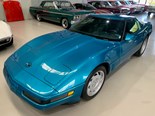Market Watch: Porsche 911



|
It is hard to pin a tag of any kind on Porsche’s seemingly immortal 911. No automotive shape or configuration has survived longer than the Porsche 911 and nothing else ever will
The 911, announced in 1963 as the short-lived 901, was intended as a transitional model, but nobody told that to the millions of people who bought these Porsches new or have owned them as used cars.
Values during the past 50 years climbed steadily, before a sudden surge some years back. A few versions then saw a mild decline, followed by a revival during the Pandemic Age.
Once current economic manipulation takes full effect, Porsche’s rear-engined survivor might be in for another downturn, but for this Keith Richards of the automotive world, there is little chance of a slump lasting for long.
Australians have loved 911s from the very beginning. We didn’t care that the 2.0-litre 911T struggled to outdrag a VF Valiant Pacer because when the bends got tricky and the road surface rotten, a Porsche driven by someone who knew their stuff would disappear into the distance.
| Reader Ride: 1973 Porsche 911 2.4T

Later cars with bigger engines had no problem with straight-line performance, especially when a turbocharger was helping them along.
Porsche never concerned itself with gadgets, preferring to save weight and concentrate on simplicity. By the 1990s, though, 911 Carreras were sprouting air conditioners, 10 speaker stereos, power-adjustable leather seats and a rear window wiper.
As the influence of the Global Financial Crisis began to dissipate, the money being sought and paid for pre-1974 models took on a huge upward surge. US values began moving during 2013 and within two years the entire known world was feverishly chasing early cars.
| Read next: Restomod 1973 Porsche 911

Into the frame by 2016 came late-1980s Speedsters, pre-1985 Turbos and any kind of RS Carrera. Cars with 3.0, 3.2 or 3.6-litre engines all remained steady until demand for early cars peaked, then they began moving too.
There are still apparent bargains amongst cars with 3.4-litre flat six engines. These were available from 1998-2001 but suffered endemic engine problems. Most will be fine by now, but the reputational damage lingers.
How the prices moved
| 2010 | ||||
| MODEL | YEARS | CONDITION 3 $ |
CONDITION 2 $ |
CONDITION 1 $ |
| 911 Coupe | 1966-1973 | 22,000 | 48,000 | 72,000 |
| 911 Coupe | 1974-1978 | 15,000 | 29,000 | 40,000 |
| 911 Coupe | 1979-1983 | 14,000 | 27,500 | 37,000 |
| 911 3.2 Coupe | 1984-1988 | 20,000 | 37,000 | 52,000 |
| 911 3.6 Coupe | 1989-1994 | 27,000 | 46,000 | 63,000 |
| 911 Turbo | 1978-1984 | I/D | 50,000 | 72,000 |
| 2015 | ||||
| MODEL | YEARS | CONDITION 3 $ |
CONDITION 2 $ |
CONDITION 1 $ |
| 911 Coupe | 1966-1973 | 28,000 | 55,000 | 85,000 |
| 911 Coupe | 1974-1978 | 15,000 | 29,000 | 40,000 |
| 911 Coupe | 1979-1983 | 14,000 | 27,500 | 40,000 |
| 911 3.2 Coupe | 1984-1988 | 18,000 | 33,000 | 47,000 |
| 911 3.6 Coupe | 1989-1994 | 22,000 | 40,000 | 55,000 |
| 993 Carrera | 1994-1998 | I/D | 45,000 | 62,000 |
| 911 Turbo | 1978-1984 | I/D | 65,000 | 85,000 |
| 2018 | ||||
| MODEL | YEARS | CONDITION 3 $ |
CONDITION 2 $ |
CONDITION 1 $ |
| 911 Coupe | 1966-1973 | 60,000 | 135,000 | 215,000 |
| 911 Coupe | 1973-1978 | 35,000 | 80,000 | 135,000 |
| 911 Coupe | 1979-1989 | 25,000 | 57,500 | 90,000 |
| 996 Carrera | 1998-2001 | 18,000 | 38,000 | 55,000 |
| GT3 Carrera | 2003-2005 | I/D | 145,000 | 200,000 |
| 911 Turbo | 1978-1984 | I/D | 175,000 | 270,000 |
| 2023 | ||||
| MODEL | YEARS | CONDITION 3 $ |
CONDITION 2 $ |
CONDITION 1 $ |
| 911 Coupe | 1966-1973 | I/D | 155,000 | 225,000 |
| 911 Coupe | 1973-1978 | 45,000 | 90,000 | 145,000 |
| 911 Coupe | 1979-1989 | I/D | 82,000 | 145,000 |
| 993 Coupe | 1989-1997 | I/D | 115,000 | 135,000 |
| 996 Carrera | 1998-2001 | 27,000 | 57,000 | 85,000 |
| GT3 Carrera | 2003-2005 | I/D | 165,000 | 245,000 |
| Carrera 4 | 1989-1994 | I/D | 135,000 | 190,000 |
| 911 Turbo | 1978-1984 | I/D | 200,000 | 290,000 |
From Unique Cars #479, June 2023
Unique Cars magazine Value Guides
Sell your car for free right here
Get your monthly fix of news, reviews and stories on the greatest cars and minds in the automotive world.
Subscribe

.jpg)











.png)

